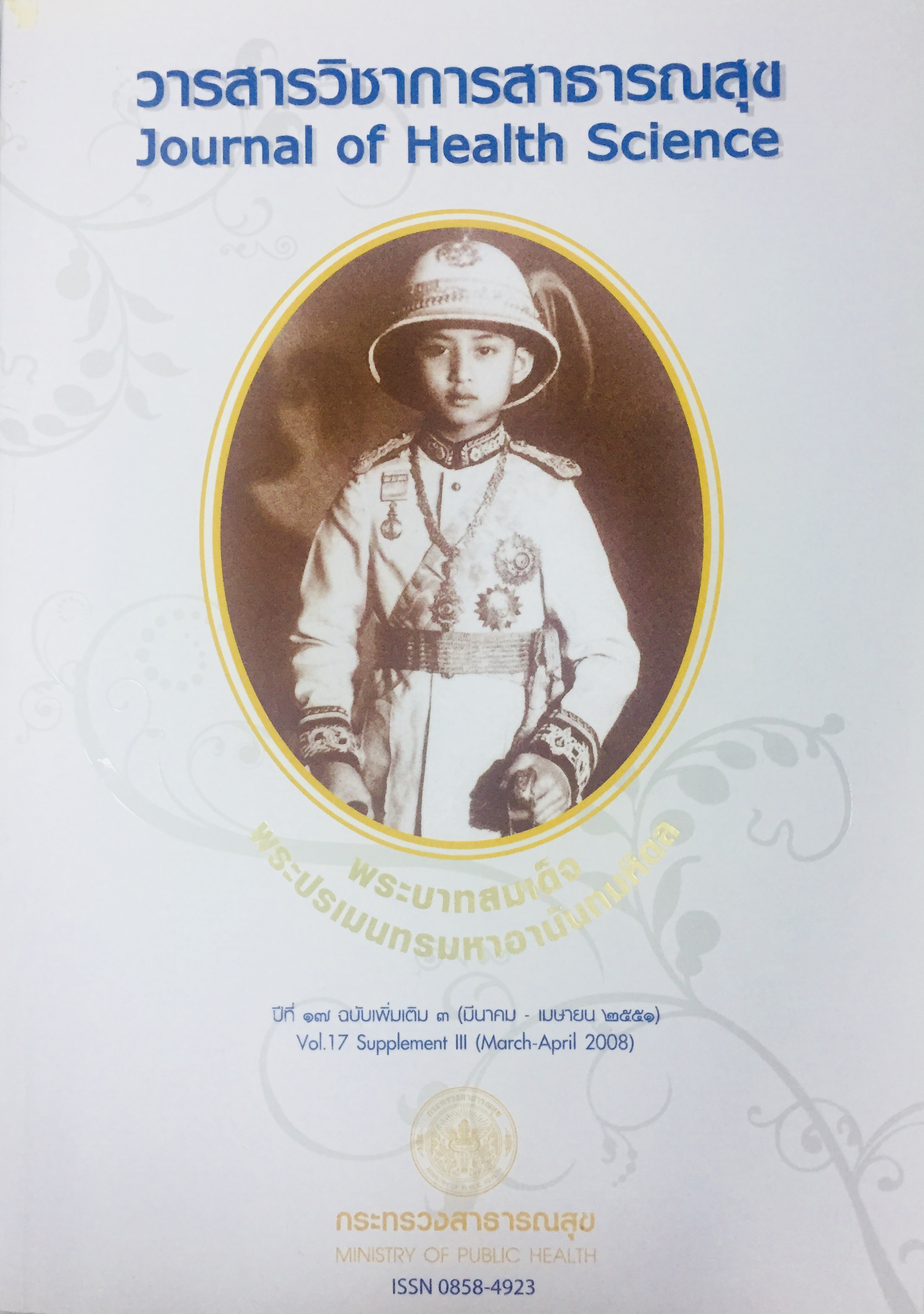ผลของการออกกำลังกายในผู้ใช้คอมพิวเตอร์ ที่มีอาการปวดคอ ไหล่ หรือสะบัก
คำสำคัญ:
ปวดคอ, ปวดไหล่, การออกกำลังกายของคอ ไหล่, ผู้ใช้คอมพิวเตอร์บทคัดย่อ
การศึกษาเชิงเปรียบเทียบแบบเก็บข้อมูลไปข้างหน้านี้มีวัตถุประสงค์เพื่อศึกษาผลของการออกกำลังกายในผู้ใช้คอมพิวเตอร์ที่มีอาการปวดคอ ไหล่ หรือสะบัก กลุ่มตัวอย่างคือผู้ทำงานในสำนักงานของหน่วยงานภาครัฐและเอกชนในจังหวัดชลบุรีจำนวน 110 คน ศึกษาระหว่างพฤศจิกายน 2550 ถึงมีนาคม 2551 โดยประเมินระดับความปวดด้วย visual analogue scale (0-10 VAS) เปรียบเทียบก่อนและหลังการออกกำลังกายยืดกล้ามเนื้อด้วยตนเอง 6 ท่า
พบว่ากลุ่มตัวอย่างส่วนใหญ่เป็นเพศหญิงร้อยละ 84.5 โดยร้อยละ 50.9 มีอายุอยู่ระหว่าง 20-30 ปี ระยะเวลาทำงานโดยใช้คอมพิวเตอร์เฉลี่ย 5.9 ชั่วโมงต่อวัน (SD 1.98) หลังการออกกำลังกายพบว่าระดับความปวด (VAS) ของกลุ่มตัวอย่างลดลงเมื่อเปรียบเทียบกับก่อนออกกำลังกายเฉลี่ยร้อยละ 38.38 (SD 25.9)และเมื่อเปรียบเทียบระดับVASก่อนและหลังออกกำลังกายด้วย paired t-test พบว่ามีความแตกต่างกันอย่างมีนัยสำคัญทางสถิติ (95% CI 1.19, 1.5) นอกจากนี้การออกกำลังกายยังมีผลช่วยลดความตึงตัวของกล้ามเนื้อและเพิ่มความสามารถในการเคลื่อนไหวของคอ ไหล่อีกด้วย, และเมื่อแบ่งกลุ่มตัวอย่างเป็นระดับความรุนแรงต่ำ (O<VAS≤3) ปานกลาง(3<VASs6) และสูง(6<VAS≤10) พบว่ามีการเปลี่ยนแปลงของจำนวนอาสาสมัครในกลุ่มความรุนแรงปานกลางและสูงลดลงอย่างเห็นได้ชัดหลังจากการออกกำลังกาย
สรุปการออกกำลังกายเพื่อยืดกล้ามเนื้อนี้มีผลลดระดับความปวด และความตึงตัวของกล้ามเนื้อในผู้ใช้ คอมพิวเตอร์ที่มีอาการปวดคอ ไหล่ หรือสะบักได้อย่างมีนัยสำคัญทางสถิติ
Downloads
ดาวน์โหลด
เผยแพร่แล้ว
วิธีการอ้างอิง
ฉบับ
บท
การอนุญาต
ลิขสิทธิ์ (c) 2018 วารสารวิชาการสาธารณสุข

This work is licensed under a Creative Commons Attribution-NonCommercial-NoDerivatives 4.0 International License.







